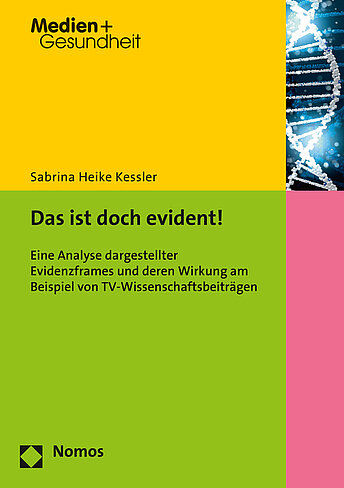dissertation
It's evident!
Kessler, S. H. (2016). Das ist doch evident! Eine Analyse dargestellter Evidenzframes und deren Wirkung am Beispiel von TV-Wissenschaftsbeiträgen. [It's evident! Identifying frames of evidence as used in science TV programs and testing their effects on beliefs]. (Reihe Medien + Gesundheit, Band 12). Baden-Baden: Nomos. DOI: 10.5771/9783845275468
Medical issues presented on science TV programs are depicted more or less supported by evidence. In one report, science journalists choose different sources of scientific evidence (e.g., experimental studies, case studies, or expert opinions) and represent different argumentations. The way that the evidence for scientific medical issues is depicted in science programs impacts recipients’ beliefs about these issues. In the present study, a standardized content analysis was conducted, applying the Dempster-Shafer-theory of evidence (1976). Frames of evidence were first identified, and then examined experimentally to determine whether and how these frames influenced the beliefs of recipients. A model mapping the dynamic effects of formal-abstract frames of evidence was created, with the role of preexisting beliefs about given issues being a point of emphasis in the discussion.
Book review: Huber, B. Publizistik (2017). doi:10.1007/s11616-017-0326-8
